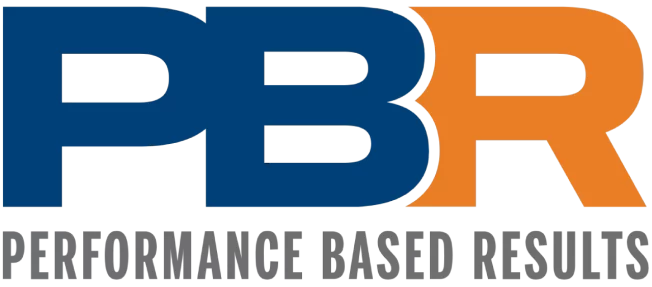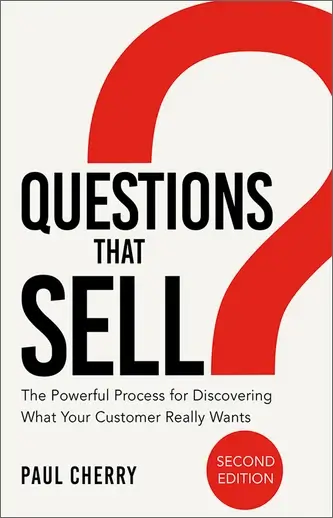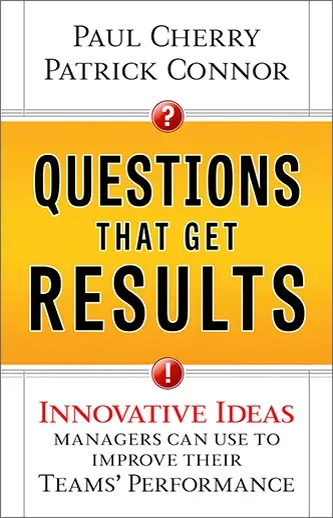Neil Rackham introduced spin selling, which redefined the approach to complex sales. Instead of pitching a product directly, this technique leads customers through carefully structured questions that uncover their needs and align them with a fitting solution.
These questions are categorized into four essential types: Situation, Problem, Implication, and Need-Payoff. Mastering each type can greatly enhance your sales strategy. Starting with Situation questions, these aim to gather basic information about the customer’s current environment.
For instance, asking about how their current sales process operates or how many team members are involved in customer service provides critical context. However, it’s important to avoid overloading the customer with too many questions at this stage, as it could feel like an interrogation.
Understanding the SPIN Selling Methodology
SPIN Selling, a sales technique pioneered by Neil Rackham focuses on guiding prospects through a series of purposeful questions rather than relying on aggressive selling tactics.
The method is built around four core question types: Situation, Problem, Implication, and Need-Payoff. Together, these help sales professionals deeply understand their prospects and position their products or services as ideal solutions to specific challenges.
Situation Questions
In the SPIN Selling methodology, situation questions are crucial in establishing the foundation for a successful sales conversation. These are the opening questions that help a salesperson understand the prospect’s current environment, challenges, and goals.
Though they seem simple, they set the stage for deeper, more meaningful discussions when used effectively. At the core of Situation questions is the need for information gathering.
They allow the salesperson to paint a clear picture of the prospect’s existing situation. For instance, asking, “How does your company currently handle customer service inquiries?” or “What systems are you using to track sales performance?” helps collect essential data without diving into more personal or sensitive matters.
These questions provide a broad understanding of the prospect’s context, guiding the conversation’s later stages.
Problem Questions
Problem questions facilitate the shift from basic information collection to gaining a deeper understanding of the prospect’s specific challenges and needs. After using Situation questions to understand the prospect’s current environment, Problem questions dig deeper, identifying the challenges and frustrations that could hold the business back.
These questions go beyond the surface, encouraging the prospect to reflect on what isn’t working and how it’s affecting their success.
For example, rather than simply asking about the systems they’re using, a salesperson might pose questions like, “What issues have you encountered with your current solution?” or “How has this challenge impacted your team’s performance?” These questions highlight inefficiencies and start revealing the areas that need improvement.
The beauty of Problem questions lies in their ability to shift the conversation from theoretical to practical. They move the discussion from facts to emotions, from “what is” to “what should be.”
Implication Questions
Implication questions elevate the conversation by revealing the potential consequences of unresolved issues, adding a deeper level of meaning to the discussion. Once the prospect’s issues have been identified through problem questions, Implementation questions help them realize the broader impact those problems might have on their business or operations.
This is where sales performance coaching proves invaluable, as it equips sales teams with the skills to strategically guide these deeper conversations. Coaching teaches sales professionals how to ask targeted Implication questions that encourage prospects to think about the long-term effects of their challenges.
For example, instead of focusing solely on current issues, a well-coached salesperson might ask, “What will happen if this challenge continues over the next six months?” or “How does this issue affect other departments or areas of your business?” These types of questions create urgency by showing how unresolved problems can escalate, impacting productivity, customer satisfaction, or profitability.
Need-Payoff Questions
Need-Payoff questions are designed to shift the focus from problems and their implications to the tangible benefits that a solution can offer. After exploring the prospect’s challenges through Problem and Implication questions, Need-Payoff questions bring the dialogue to a forward-looking perspective.
They are intended to prompt the prospect to reflect on how their situation could improve with the right solution.
For instance, rather than simply outlining a product’s features, you might ask, “How would resolving this issue impact your team’s efficiency?” or “What benefits would you see if this challenge were addressed effectively?” These questions are powerful because they help the prospect visualize the value and benefits of a solution on their own terms.
By encouraging them to articulate the potential improvements, you help them see the alignment between their needs and your offering. This not only makes the solution more appealing but also allows the prospect to connect emotionally with the potential outcomes.
Crafting Effective SPIN Questions
Mastering the art of crafting effective SPIN questions is key to transforming your sales conversations from generic pitches into insightful dialogues that truly resonate with prospects.
The SPIN Selling methodology emphasizes a strategic approach to questioning that guides prospects through a structured conversation.
By effectively crafting Situation, Problem, Implication, and Need-Payoff questions, sales professionals can uncover deeper insights and drive more meaningful interactions.
Customizing Questions for Your Industry
Customizing questions to reflect the unique challenges and opportunities within your sector can significantly enhance the effectiveness of your sales conversations. By aligning your inquiries with the industry context, you foster a more engaging dialogue and demonstrate a deeper understanding of your prospect’s world.
Situation questions are the starting point in any SPIN Selling strategy. To maximize their impact, adapt them to address the particular circumstances businesses face in your industry.
For example, in the technology sector, you might ask, “What are the main features you look for in a software solution?” This question not only gathers relevant information but also shows that you are attuned to the specific needs of technology buyers.
Balancing Open-Ended and Close-Ended Questions
Open-ended questions are designed to encourage detailed responses and foster a deeper conversation. They are particularly valuable in the Situation and Problem phases of SPIN Selling.
These questions allow prospects to elaborate on their experiences, providing you with a richer understanding of their context and challenges. For example, asking, “Can you describe the main difficulties your team faces with the current process?” invites the prospect to share comprehensive insights, which can uncover nuanced issues and set the stage for further discussion.
On the other hand, close-ended questions are effective for obtaining specific, concise information. They are often used in the Situation phase to quickly gather facts and establish a baseline understanding.
For instance, “Do you currently use a CRM system?” is a straightforward question that yields a clear yes or no answer, helping you assess the prospect’s current tools and systems efficiently.
Timing and Sequencing of Questions
Timing refers to when you choose to ask certain types of questions during the conversation. The initial phase should focus on Situation questions to establish context and gather basic information about the prospect’s current environment.
For instance, early in the conversation, you might ask, “What tools are you currently using?” This sets the foundation for understanding the prospect’s operational setup without diving too deeply too soon.
Once you grasp the situation, it’s time to transition to problem questions. These questions are designed to uncover specific challenges or pain points the prospect is experiencing.
Timing here is very important; you want to ensure that the prospect is comfortable and has provided enough context before probing deeper. For example, after establishing the tools they use, you might ask, “What difficulties are you encountering with your current software?” The next step involves implication questions.
Benefits of Using SPIN Selling in Your Sales Strategy
Incorporating SPIN Selling into your sales strategy can profoundly enhance your approach to engaging with prospects and closing deals.
This methodology, developed by Neil Rackham, stands out for its structured yet flexible approach to sales conversations, offering numerous benefits that can transform your sales outcomes.
At its core, SPIN Selling divides the sales process into four key types of questions: Situation, Problem, Implication, and Need-Payoff. By employing these question types strategically, you can gain a deeper understanding of your prospect’s environment, uncover their specific challenges, explore the broader impacts of these issues, and highlight the value of potential solutions.
One of the primary advantages of SPIN Selling is its focus on understanding the prospect’s unique situation and problems.
Building Stronger Customer Relationships
Building strong, lasting customer relationships is at the heart of a successful business strategy. Listening actively to your customers’ needs and concerns shows that you value their input.
When customers feel heard, they are more likely to engage positively with your brand. Open, honest dialogue helps build trust and lays the groundwork for a relationship based on mutual respect. Personalization is another crucial aspect.
Tailoring your interactions to meet individual customer preferences and needs makes them feel valued and understood.
Whether through personalized recommendations, special offers, or acknowledging important milestones, showing that you remember and care about your customers’ preferences strengthens the bond between you and them.
Enhancing Sales Conversion Rates
Boosting sales conversion rates plays a significant role in accelerating business growth and increasing revenue. To effectively boost these rates, refining your sales process and focusing on strategies that turn potential leads into loyal customers is important.
Here are some key approaches to enhancing your sales conversion rates. Understanding your target audience is crucial. Conduct thorough research to identify their needs, preferences, and pain points.
By tailoring your sales pitch and messaging to address these specific factors, you increase the likelihood of resonating with your audience and capturing their interest. Personalization can significantly affect how prospects perceive your offer, making it more relevant and appealing.
Gaining Deeper Customer Insights
Understanding your customers on a deeper level is a powerful way to enhance your business strategy and improve customer satisfaction. Gaining deeper insights into your customers goes beyond surface-level data, delving into their preferences, behaviors, and motivations.
To start, consider using various data sources to gather comprehensive customer information. Customer feedback surveys, online reviews, and social media interactions provide valuable insights into what your customers like, dislike, and what they need.
Another effective method is to conduct in-depth interviews or focus groups. These conversations offer a more personal and detailed view of your customers’ experiences and expectations.
Engaging directly with customers allows you to ask probing questions and explore their thoughts in a way that surveys might not fully capture.
Contact us now!
As explored throughout this discussion, SPIN Selling offers a powerful framework for transforming your sales strategy and boosting your effectiveness. By mastering Situation, Problem, Implication, and Need-Payoff questions, you can engage more meaningfully with prospects, uncover their true needs, and present your solutions in a way that resonates deeply.
Implementing these question types with skill and precision can elevate your sales conversations from mere transactions to insightful, solution-driven dialogues. Contact us now, and let’s start working together to unlock your full sales potential. Your path to improved sales conversions and deeper customer engagement begins here with PBResults.






